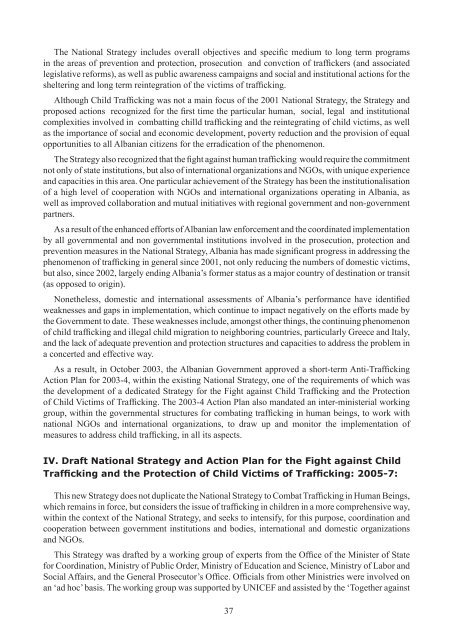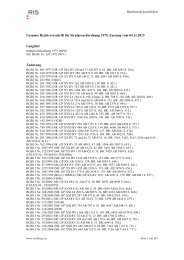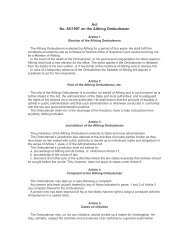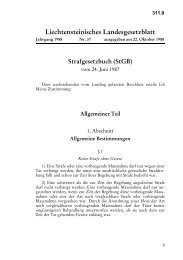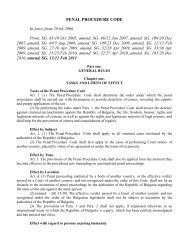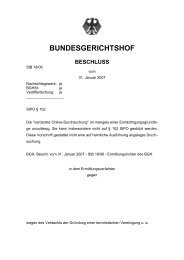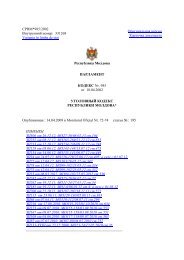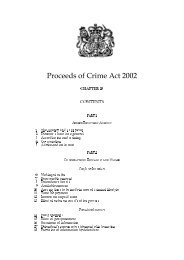strategjia kombetare shqiptare per luften kunder ... - Legislationline
strategjia kombetare shqiptare per luften kunder ... - Legislationline
strategjia kombetare shqiptare per luften kunder ... - Legislationline
You also want an ePaper? Increase the reach of your titles
YUMPU automatically turns print PDFs into web optimized ePapers that Google loves.
The National Strategy includes overall objectives and specific medium to long term programs<br />
in the areas of prevention and protection, prosecution and convction of traffickers (and associated<br />
legislative reforms), as well as public awareness campaigns and social and institutional actions for the<br />
sheltering and long term reintegration of the victims of trafficking.<br />
Although Child Trafficking was not a main focus of the 2001 National Strategy, the Strategy and<br />
proposed actions recognized for the first time the particular human, social, legal and institutional<br />
complexities involved in combatting chilld trafficking and the reintegrating of child victims, as well<br />
as the importance of social and economic development, poverty reduction and the provision of equal<br />
opportunities to all Albanian citizens for the erradication of the phenomenon.<br />
The Strategy also recognized that the fight against human trafficking would require the commitment<br />
not only of state institutions, but also of international organizations and NGOs, with unique ex<strong>per</strong>ience<br />
and capacities in this area. One particular achievement of the Strategy has been the institutionalisation<br />
of a high level of coo<strong>per</strong>ation with NGOs and international organizations o<strong>per</strong>ating in Albania, as<br />
well as improved collaboration and mutual initiatives with regional government and non-government<br />
partners.<br />
As a result of the enhanced efforts ofAlbanian law enforcement and the coordinated implementation<br />
by all governmental and non governmental institutions involved in the prosecution, protection and<br />
prevention measures in the National Strategy, Albania has made significant progress in addressing the<br />
phenomenon of trafficking in general since 2001, not only reducing the numbers of domestic victims,<br />
but also, since 2002, largely ending Albania’s former status as a major country of destination or transit<br />
(as opposed to origin).<br />
Nonetheless, domestic and international assessments of Albania’s <strong>per</strong>formance have identified<br />
weaknesses and gaps in implementation, which continue to impact negatively on the efforts made by<br />
the Government to date. These weaknesses include, amongst other things, the continuing phenomenon<br />
of child trafficking and illegal child migration to neighboring countries, particularly Greece and Italy,<br />
and the lack of adequate prevention and protection structures and capacities to address the problem in<br />
a concerted and effective way.<br />
As a result, in October 2003, the Albanian Government approved a short-term Anti-Trafficking<br />
Action Plan for 2003-4, within the existing National Strategy, one of the requirements of which was<br />
the development of a dedicated Strategy for the Fight against Child Trafficking and the Protection<br />
of Child Victims of Trafficking. The 2003-4 Action Plan also mandated an inter-ministerial working<br />
group, within the governmental structures for combating trafficking in human beings, to work with<br />
national NGOs and international organizations, to draw up and monitor the implementation of<br />
measures to address child trafficking, in all its aspects.<br />
IV. Draft National Strategy and Action Plan for the Fight against Child<br />
Trafficking and the Protection of Child Victims of Trafficking: 2005-7:<br />
This new Strategy does not duplicate the National Strategy to Combat Trafficking in Human Beings,<br />
which remains in force, but considers the issue of trafficking in children in a more comprehensive way,<br />
within the context of the National Strategy, and seeks to intensify, for this purpose, coordination and<br />
coo<strong>per</strong>ation between government institutions and bodies, international and domestic organizations<br />
and NGOs.<br />
This Strategy was drafted by a working group of ex<strong>per</strong>ts from the Office of the Minister of State<br />
for Coordination, Ministry of Public Order, Ministry of Education and Science, Ministry of Labor and<br />
Social Affairs, and the General Prosecutor’s Office. Officials from other Ministries were involved on<br />
an ‘ad hoc’basis. The working group was supported by UNICEF and assisted by the ‘Together against<br />
37


